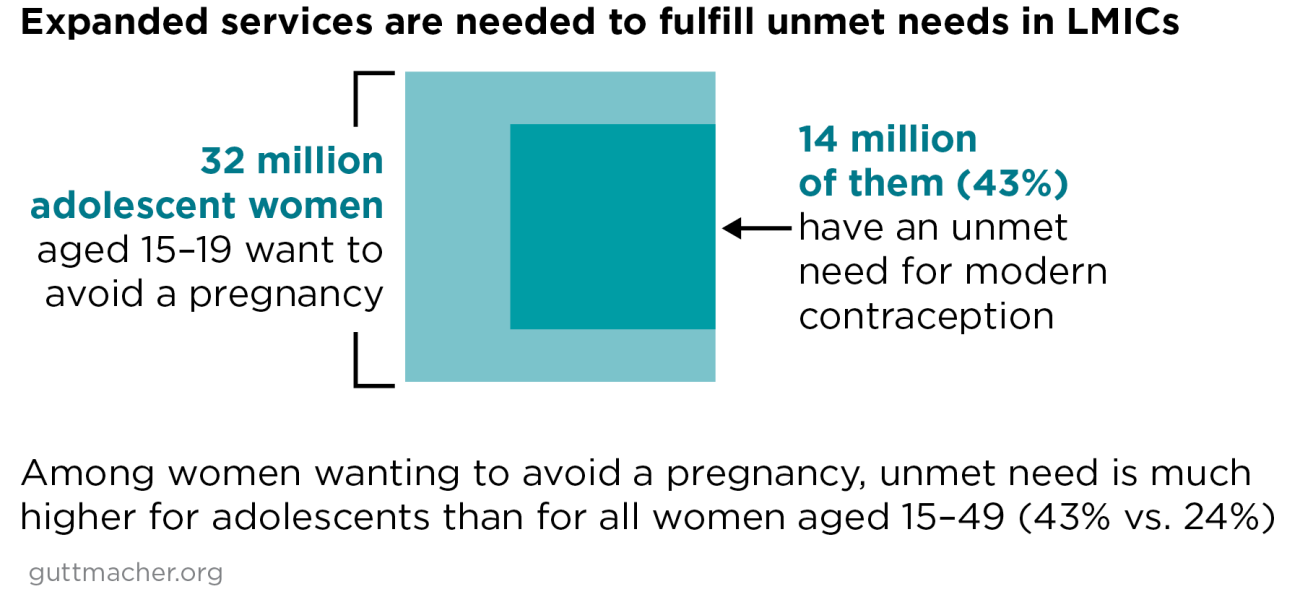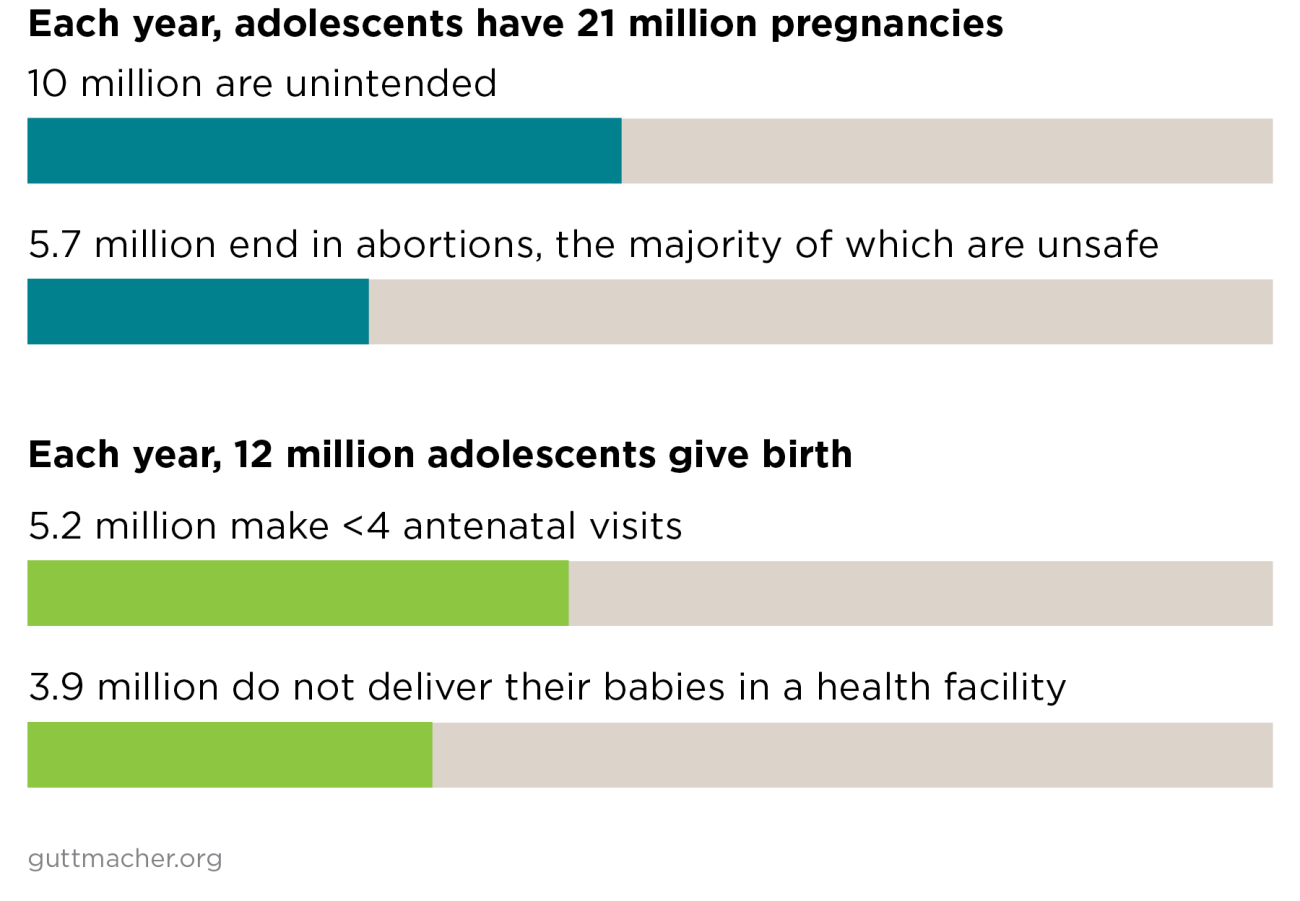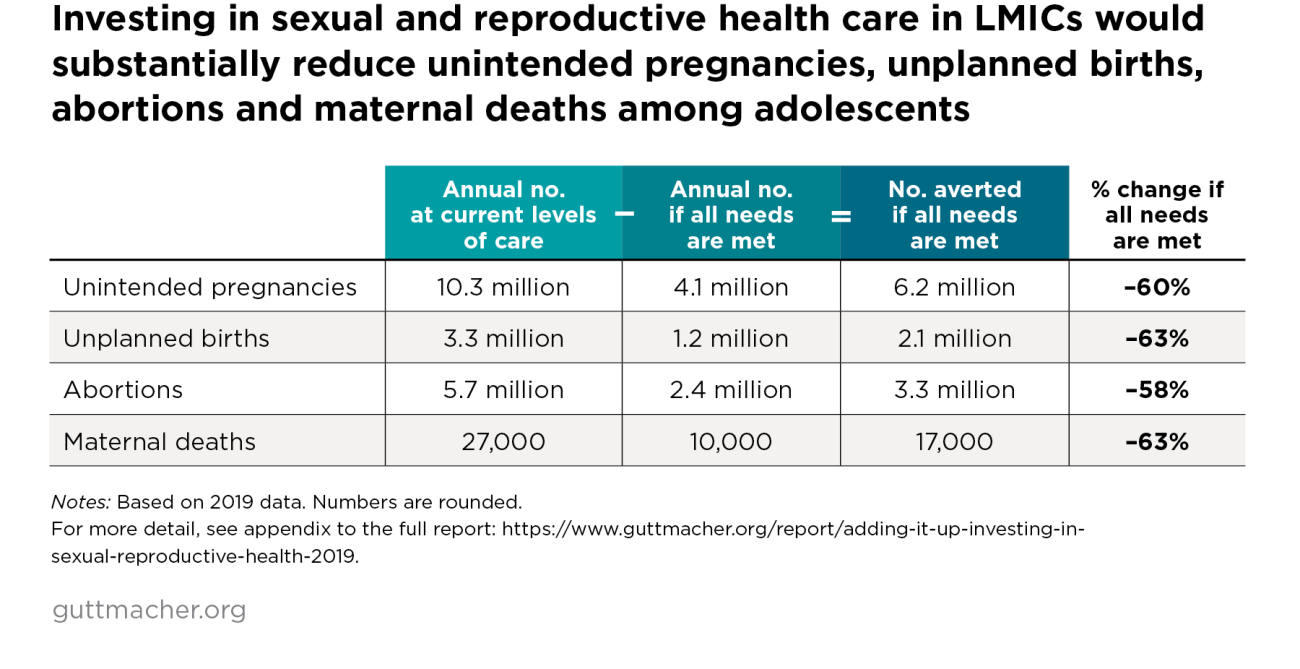The Adding It Up study examines the need for, impact of and cost of fully investing in sexual and reproductive health care—services that together ensure people can decide whether and when to have children, experience safe pregnancy and delivery, have healthy newborns, and have a safe and satisfying sexual life. This fact sheet presents data on contraceptive services, maternal and newborn care and abortion services for adolescent women aged 15–19 in 132 low- and middle-income countries (LMICs; see map) in 2019.
Investing in Adolescents’ Sexual and Reproductive Health in Low- and Middle-Income Countries
From the series Adding It Up: Investing in Sexual and Reproductive Health in Low- and Middle-Income Countries
Unmet needs for services in LMICs

- Out of 32 million adolescent women in LMICs who want to avoid a pregnancy, 14 million have an unmet need for modern contraception—that is, they want to avoid a pregnancy but are not using a modern method.
- Among women wanting to avoid a pregnancy in LMICs, unmet need is much higher for adolescents than for all women aged 15–49 (43% vs. 24%).
- Eighty-five percent of adolescent women in LMICs with an unmet need for modern contraception are using no contraceptive method at all, while the rest (15%) rely on traditional methods, such as withdrawal.
- Each year, adolescents have 21 million pregnancies, 50% of which (about 10 million) are unintended.
- Some 5.7 million adolescent pregnancies end in abortions, the majority of which occur in unsafe conditions.
- Twelve million adolescents give birth each year. Of these, 5.2 million make fewer than four antenatal care visits, and 3.9 million do not deliver their babies in a health facility.

Cost of meeting all service needs
- A package of sexual and reproductive health care that would meet all adolescent women’s needs for modern contraception, maternal care, newborn care and abortion services would cost only $1 per capita per year in LMICs. This is $0.59 per capita more than current costs.
- Every dollar spent on contraceptive services for adolescents beyond the current level would save $3.70 in the cost of maternal, newborn and abortion care.
- Expanded contraceptive services help offset the cost of improving pregnancy-related and newborn care by reducing unintended pregnancies.

Impacts of expanding and improving services

- If all adolescent women in LMICs wanting to avoid a pregnancy were to use modern contraceptives and all pregnant adolescent women and their newborns were to receive care at internationally recommended standards, the impacts would be dramatic:
- Unintended pregnancies would drop by 60%, leading to fewer unsafe abortions
- Unplanned births would drop by 63%
- Maternal deaths would drop by 63%
- Health investments can transform the lives of adolescent women by improving their educational and employment outcomes.
Investing for the future
- Investments in meeting adolescent women’s need for modern contraceptive services and pregnancy-related and newborn care would result in greater impacts than investing in either type of care alone; in addition, these investments provide national and local governments, the private sector and international development partners with good value for money.
- Effective actions to improve adolescent sexual and reproductive health take a multifaceted approach and provide young people with access to services that are nondiscriminatory; medically accurate; and developmentally, culturally and age-appropriate.
- Full provision of high-quality care, free of stigma and discrimination, would enable adolescents to overcome common barriers to use and to exercise their sexual and reproductive rights.
Interactive figure media
Interactive Figure
Source
The information in this fact sheet can be found in Sully EA et al., Adding It Up: Investing in Sexual and Reproductive Health 2019, New York: Guttmacher Institute, 2020, https://www.guttmacher.org/report/adding-it-up-investing-in-sexual-repr….
Acknowledgments
This fact sheet was made possible by UK Aid from the UK Government and grants from the Bill & Melinda Gates Foundation, The Children’s Investment Fund Foundation and the Dutch Ministry of Foreign Affairs. The findings and conclusions contained within are those of the authors and do not necessarily reflect positions or policies of the donors.
From the series Adding It Up: Investing in Sexual and Reproductive Health in Low- and Middle-Income Countries
Additional Downloads
- This fact sheet is also available in German adding-it-up-investing-in-sexual-reproductive-health-adolescents-deutsch.pdf
Reproductive rights are under attack. Will you help us fight back with facts?
